[ad_1]
17 Books to By Indigenous Authors to Read During Native American Heritage Month
It’s easy—especially in the United States—to let commemorative times like Indigenous Peoples’ Day and Native American Heritage Month pass without giving them much thought. Because of the long-lasting narratives of settler colonialism, it’s easy to drift through these times thinking only of bygone ‘Indians,’ the war-whooping horse riders charging cowboys as represented in John Wayne and Clint Eastwood movies. That is, much of the work of settler colonialism has led to a still-prevalent narrative that Indigenous peoples are relegated to the past, a civilization of a different time now largely absent, if not entirely so, from the American landscape. A lack of sustained focus on demolishing this narrative in the educational milieus of the country makes it an easy one to maintain, even in the face of unprecedented activist and communal action led by Indigenous peoples, as with the #NoDAPL movement, among many others.
Just as there are Indigenous activists fighting for their communities against the power of multinational, extractive corporations, there are Indigenous writers ripping apart these narratives of settler colonialism. Their words should challenge us to confront and break down all the stereotypical beliefs we might hold about Indigenous people and Indigenous communities because of these settler colonial narratives that persist in a settler colonial nation. To welcome in Native American Heritage Month and to encourage you to think about the very real, continuous presence of Indigenous peoples, I collected here 17 books by Indigenous authors who will challenge all that you thought you knew about indigeneity in North America.

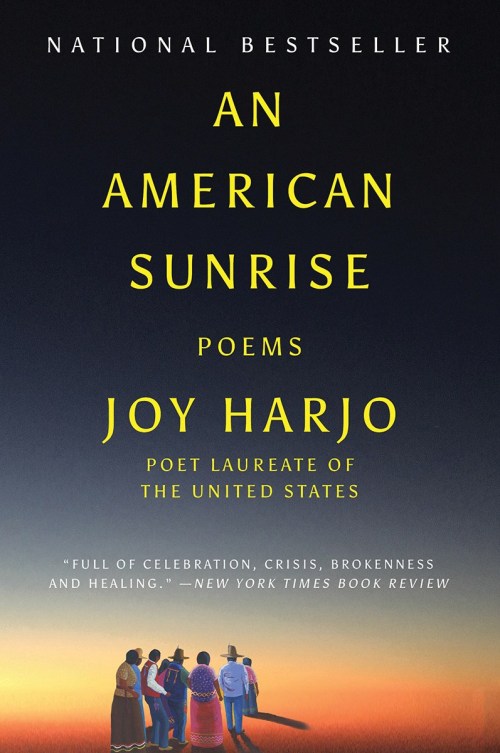
An American Sunrise: Poems
by Joy Harjo
W. W. Norton & Company
Joy Harjo was the Poet Laureate of the U.S. from 2019-2022 and the first Native writer to hold that appointment. Poems like those in An American Sunrise clearly show her ability to live up to that national honor. These poems are thoughts and responses to Harjo’s return to Okfuskee, Alabama, where her ancestors were forcibly removed by the power of the 1830 Indian Removal Act. The poems in An American Sunrise, like Harjo’s music, are rhythmic and driving, pushing readers forward into spaces of connection and power, into violence and memory, into land and stories. Harjo, as her poetry has done for decades now, encourages readers to linger in the pain and the joy and find meaning in that tension.
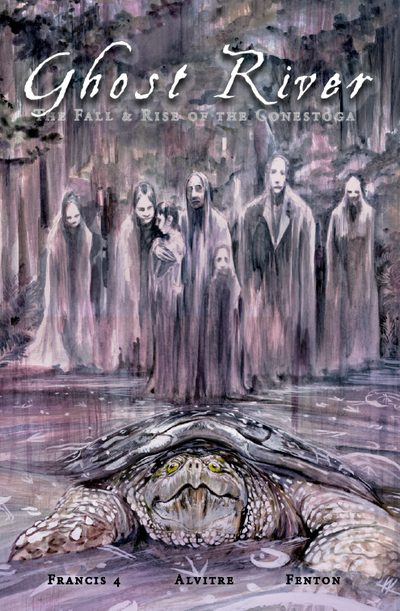
Ghost River: The Fall and Rise of the Conestoga
by Lee Francis IV and Weshoyot Alvitre
Red Planet Books and Comics
You know those stories that you hear about history in the U.S. that isn’t told in schools? Ghost River is one of those stories. Using the comics form, Ghost River tells of the murder of 20 unarmed Conestoga People as a part of the Paxton massacres of 1763 in Pennsylvania. Funded by the Pew Center as a part of the Redrawing History: Indigenous Perspectives on Colonial America project of the Library Company of Philadelphia, Ghost River reconsiders how we tell stories of the past and how we frame the American project so fundamentally based in violent settler tactics. Instead of focusing solely on the event, Lee Francis IV and Weshoyot Alvitre consider the victims, the Indigenous people and their kin, and that makes all the difference.
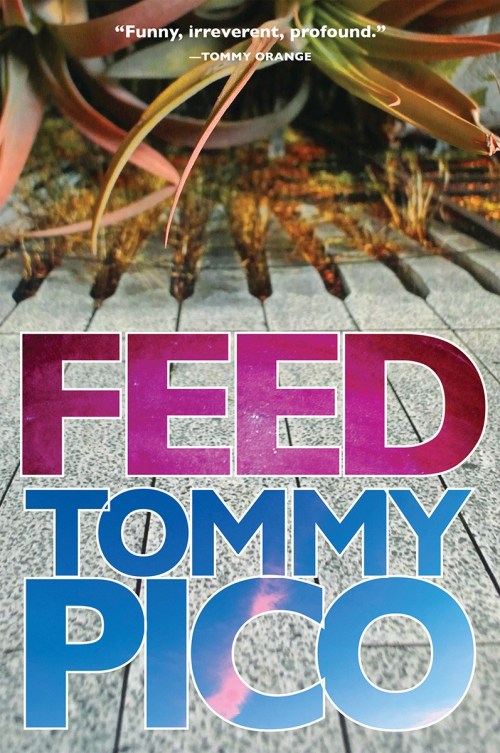
Feed
by Tommy Pico
Tin House Books
Feed is the fourth book in Pico’s tetralogy focusing on Teebs, an exaggerated stand-in for the author himself. Like the collections that came before it, Feed recounts Teebs’s restless life and considers what appetites exist in modern society. While Pico’s IRL considers the connection between our physical selves and our online personas, Feed questions how information and gossip, especially that from online sources, has provided for our gluttonous desires. Pico questions what it might look like for us to be nourished, but that nourishment requires that we nourish those around us, both the humans and the nonhuman others—the land itself. In a stunning meditation on information, relationships, the land, and food of all kinds, Pico pushes readers right up to that question of healing—a hopeful future that still seems just out of reach.
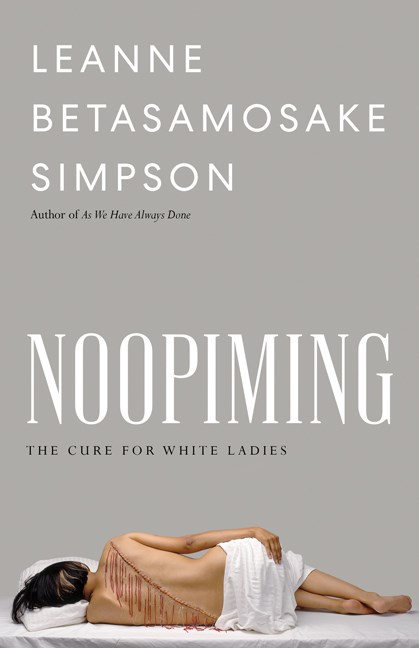
Noopiming: The Cure for White Ladies
by Leanne Betasamosake Simpson
The University of Minnesota Press
Leanne Betasamosake Simpson is one of a few Canadian writers included on this list because, while Native American Heritage Month is a U.S. recognition, the concept of boarders is a distinctly settler invention. Anishinaabe for “in the bush,” Noopiming offers a different approach at telling a story, a revisioning and decolonizing of narrative that deconstructs everything we might expect from a story. With a title responding to English Canadian settler Susanna Moodie’s memoir Roughing It in the Bush, Simpson crafts a story of connection and freedom against the long arch of settler violence and destruction. Simpson matches humor with meticulous detail to create, in the words of Alexis Pauline Gumbs, a “poem, novel, prophecy, handbook, and side-eyed critique all at once.” The experimentalism aligns with the revolutionary nature of this book that centers love above all.
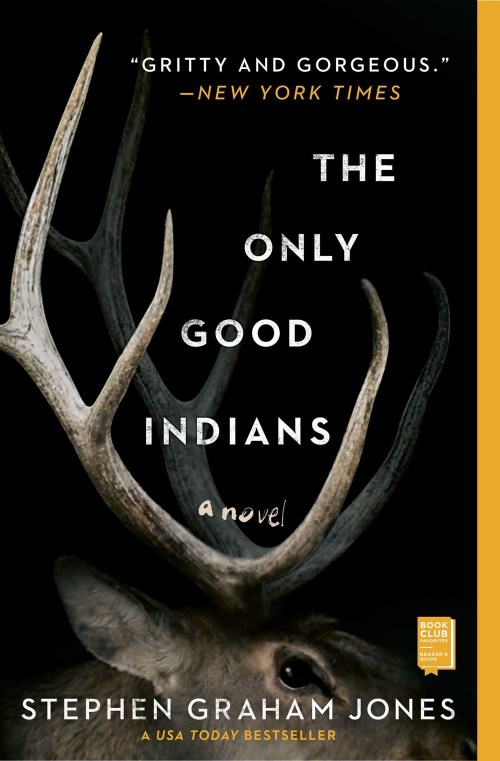
The Only Good Indians
by Stephen Graham Jones
Gallery / Saga Press
In an 1886 speech in New York Theordore Roosevelt asserted, “I don’t go so far as to think that the only good Indians are dead Indians, but I believe nine out of every ten are. And I shouldn’t like to inquire too closely into the case of the tenth.” Stephen Graham Jones’s 2020 novel that takes its title from this quote reframes the very question of good and bad in an effort to center Indigenous, rather than settler, understandings of relationships that tell so much about the ‘goodness’ and ‘badness’ of a person. The figure of the Elk-Head Woman, a haunting figure in stories across tribal communities (other times referred to as Deer Woman), haunts the pages of this novel, as four men are confronted with a choice they made and the bad relations it garnered. Through paranoia, murder, and basketball, Jones will have you questioning everything you thought good or bad in the world.

Love After the End: An Anthology of Two-Spirit and Indigiqueer Speculative Fiction
edited by Joshua Whitehead
Arsenal Pulp Press
Love After the End is a collection of stories that consider what it means to love within the apocalyptic. These stories highlight the love, joy, and eroticism of two-spirit, Indigiqueer communities. The collection highlights love between people, between humans and AI-augmented animals, and between Indigiqueers and the doomed planet they must leave. At the center of these stories is relationality, community, and connection, which help to define who we are and how we love and might continue to love, especially within Indigenous communities. As Whitehead notes, Indigenous communities have already lived through their apocalypse—colonialism. These stories show the ongoing tendril-like effects of colonialism but are not wholly defined by it. There is a potential beyond colonialism, beyond the apocalyptic, that lies in Indigenous love, two-spirit love, Indigiqueer love.
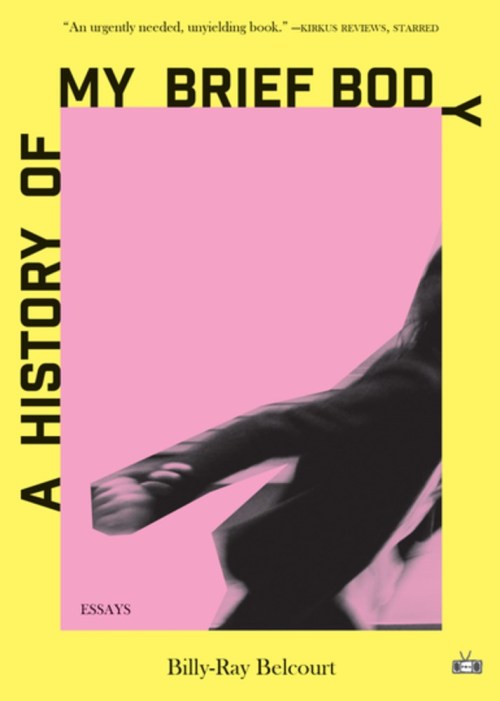
A History of My Brief Body
by Billy-Ray Belcourt
Two Dollar Radio
In this essay collection meets memoir meets prose poem, Billy-Ray Belcourt weaves tales and thoughts of ambiguity in “a series of stories and analytical scenes into a composite that exceeds the boundaries of my individual life.” Constantly considering the need for joy and the difficulty in finding it as a queer Cree man, Belcourt’s words exude materiality, tactility, that touch of body on body in an embrace that may not be about love, but just connection. But even connection is love of a type. And the body becomes a way of thinking of one’s relationship to the nation, especially as a racialized, queer subject. A History of My Brief Body is a knotted and astute meditation that comforts and sways and jolts and bursts in equal parts, showing the constant battle for wholeness in a nation, a world, that tries to define you by your absence.
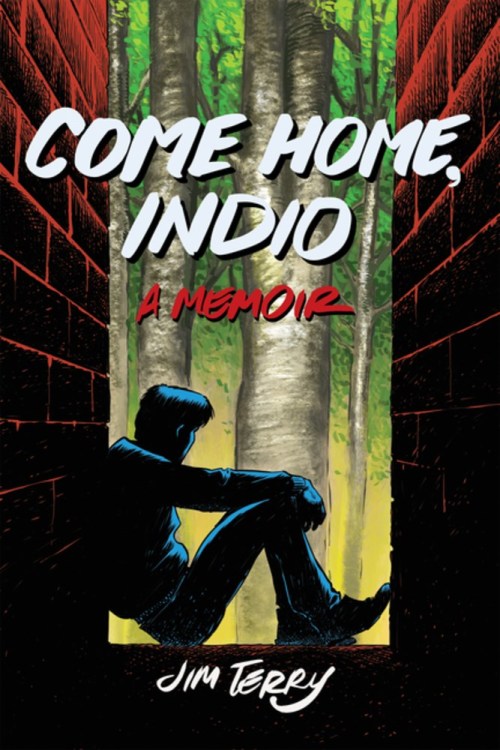
Come Home, Indio: A Memoir
by Jim Terry
Street Noise Books
Jim Terry’s graphic memoir Come Home, Indio tells Terry’s own story, the story of his family, and the story of searching and struggling to belong. Terry was born in California and grew up moving between the suburbs of Chicago with his Ho-Chunk mother and Irish father and the Dells in Wisconsin with his Ho-Chunk relatives. Like the best graphic memoirs, Terry works through his life highlighting the times, places, and people in ways that only the comics form can. Come Home, Indio depicts the struggle of belonging in Indigenous communities you didn’t grow up in and facing down the stereotypes, some of which are too real, of Indigenous people in the Twentieth Century.
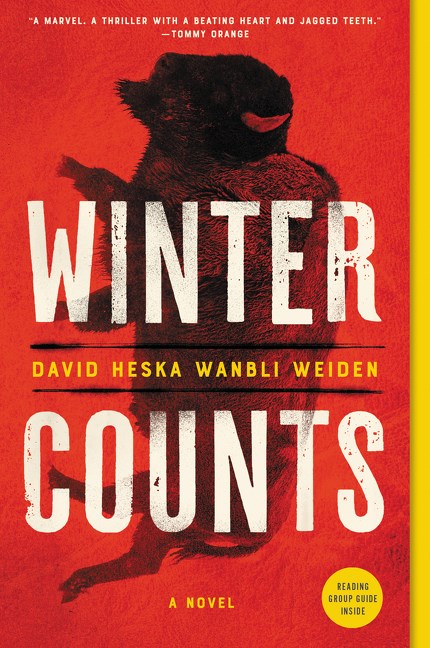
Winter Counts
by David Heska Wanbli Weidan
Ecco
Winter Counts is an entry in the burgeoning genre of Indigenous crime fiction, a subgenre that sees multiple exciting new releases every year. In his debut novel, David Heska Wanbli Weidan tells the story of Virgil Wounded Horse, an enforcer-for-hire on the Rosebud Indian Reservation. As Virgil begins investigating the presence of heroin on the reservation, which gets its hooks in his nephew, he has to face the dangers of organized drug cartels as well as the thorniness of tribal politics. What starts as a story about protecting the ones you love, quickly becomes a frenzied story about confronting the past and reconsidering what it means to be Native now. Through the genre of crime fiction, David Heska Wanbli Weidan situates readers face to face with the enduring effects of settler colonialism and some of the most difficult questions Indigenous communities encounter today.
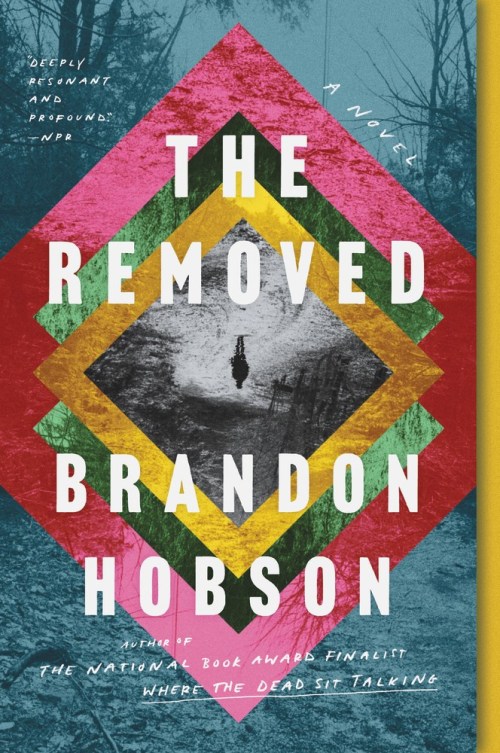
The Removed
by Brandon Hobson
Ecco
In this follow-up to his debut novel Where the Dead Sit Talking, Brandon Hobson picks up on themes of grief and loss in a Cherokee family. With the 15-year anniversary of the death of their son Ray-Ray, who was shot by police officers, Maria and Ernest Echota call their family together again. The grief that has permeated the years has affected each member of the Echota family in their own way, often causing gaps in the connection between family members. Now, Edgar, the youngest son, finds himself in the Darkening Land, that space between the living and the dead, after a suicide attempt. Bringing the past into conversation with the present and offering viewpoints from each main character, Hobson crafts a story of ongoing familial and communal relations in the face of loss and mourning. The stories of these family members, together, take up the call for justice that has remained unanswered for far too long, 15 years, but also centuries.
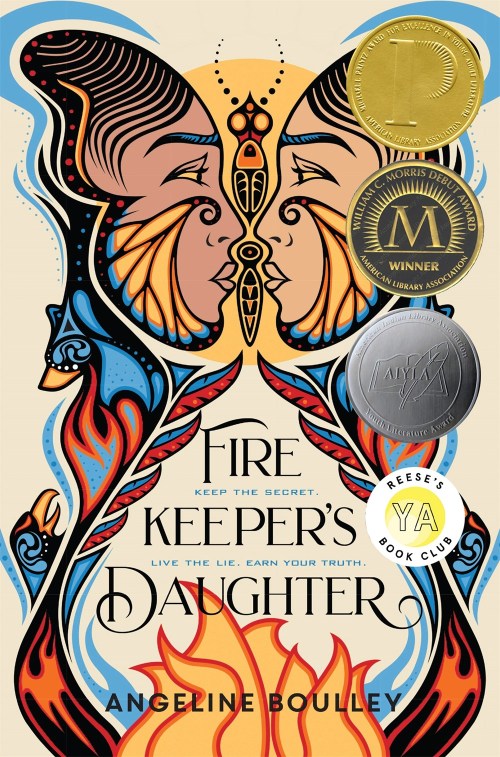
Firekeeper’s Daughter
by Angeline Boulley
Henry Holt and Co.
Firekeeper’s Daughter, Angeline Boulley’s debut novel, follows Daunis Fontaine, a young Anishinaabe woman, as she risks more than just her life to go undercover after witnessing the murder of a friend. As Daunis works with the FBI to investigate a new drug, she struggles with her identity as an unenrolled tribal member and as a descendent of a prominent, non-Native family in Sault Ste. Marie. Stuck between the microaggressions from her community, and working with an institution that has traditionally oppressed her people, Daunis must confront the corruption that seems to be infecting everything around her. Boulley, in Daunis, gives readers a bold and forceful anchor who realizes that protecting her community may require some painful decisions.
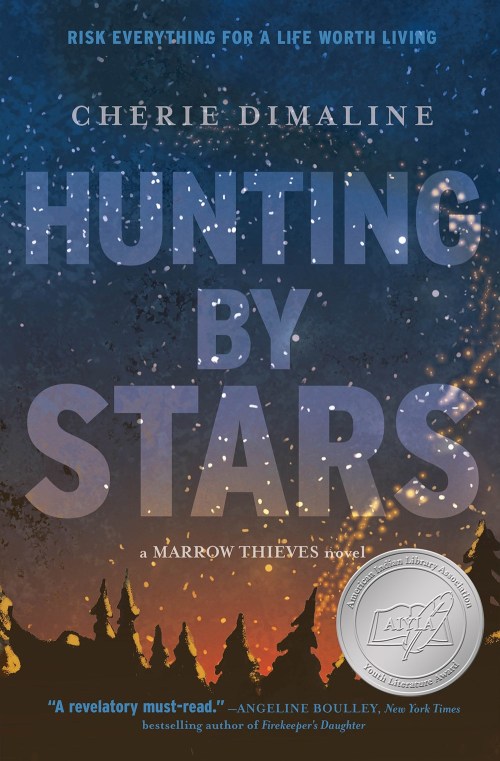
The Marrow Thieves & Hunting By Stars
by Cherie Dimaline
Dcp & Amulet Books
The Marrow Thieves and the sequel Hunting By Stars both imagine a futuristic return to the residential school era in Canadian history. This time, rather than focusing on education a la assimilation of Indigenous children, the schools play the role of farms harvesting from the bodies of Indigenous people. In this future, settlers have lost the ability to dream, which leads to a loss of hope, joy, and connection. Indigenous people retain the ability to dream and thus attract a new ire from settler society. The Marrow Thieves introduces readers to this world and to Frenchie’s found family as they try to survive and elude government captors, while Hunting By Stars delves into the new schools and the day-to-day lives of those imprisoned there. Like many other books on this list, both The Marrow Thieves and Hunting By Stars foreground community and connection and prove that dreaming of a future without connections is dreaming of no future at all.
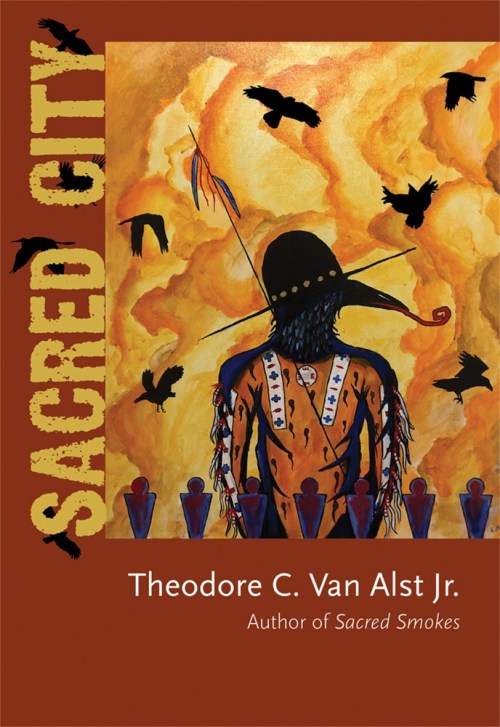
Sacred Smokes & Sacred City
by Theodore C. Van Alst
University of New Mexico Press
Of course, I have to include a Chiago-centric book—so I’ll include two. Theodore C. Van Alst’s incredible debut short story collection Sacred Smokes and the follow-up, Sacred City, tells the story of Teddy, a young Native protagonist navigating life in Chicago. Few books embody the freneticism of urban life like these two. The speed, wit, and force of Van Alst’s prose propels readers through stories that are at once manic and reflective. The sheer momentum of Van Alst’s words hurdles readers directly into the joys and difficulties of growing up and living in Chicago, and the communal complexities of the phrase “urban Indian.” There’s an electricity to these stories that is at once beautiful and extremely uncomfortable, but it’s a place that feels so right while you’re in it.
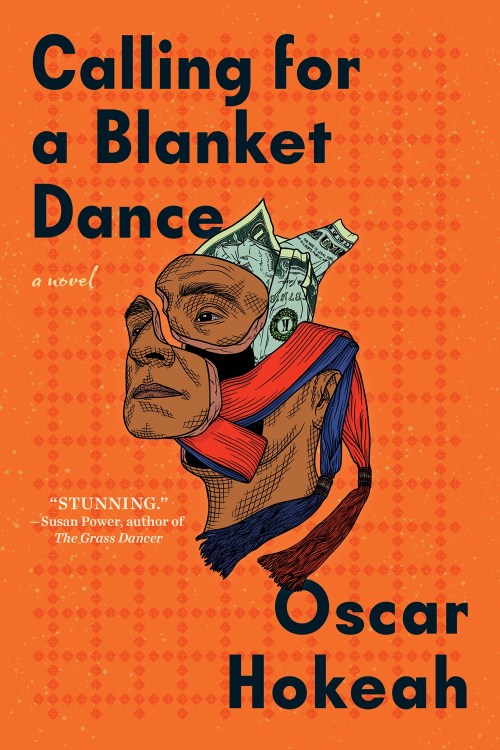
Calling for a Blanket Dance
by Oscar Hokeah
Algonquin Books
Oscar Hokeah’s debut novel—structured through chapters that change narrative viewpoints and weave together to tell a story of an individual, a family, and community—reads like a Louise Erdrich novel. Yet, while this inspiration seems clear, Hokeah’s story is profoundly original. Following Ever Geimausaddle across five decades of life, Calling for a Blanket Dance offers a necessary reflection on identity and intergenerational trauma. From drugs and alcoholism, to premature births to tribal ceremonies, Hokeah masterfully tells the story of Ever and his community, even in those moments when we are only seeing Ever on the periphery of someone else’s viewpoint. Sometimes to see the story we need to see, we have to see it, hear it, and feel it from multiple perspectives, because, contrary to the basest racism of settler society, a Native is not an Native is not an Native. Stories are always more complicated than that.
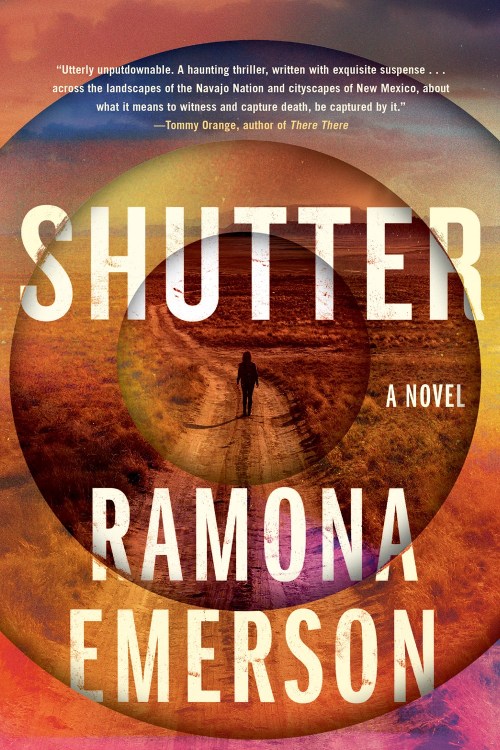
Shutter
by Ramona Emerson
Soho Crime
Like the above-mentioned Winter Counts, Shutter offers another approach to Indigenous crime fiction, with a healthy dose of the supernatural and horrific. Rita is a young and remarkably skilled crime scene photographer who also happens to communicate with ghosts, especially those of crime victims. Growing up, Rita’s grandmother and the local medicine man encourage her to keep a barrier between her and the dead lest a malicious force latch onto her, but this protection is hard to maintain when the ghosts she sees are struggling with their own deaths and simply looking for answers. All at once Emerson considers what it means to capture death and continue living, to find answers in a bloody wave of questions.
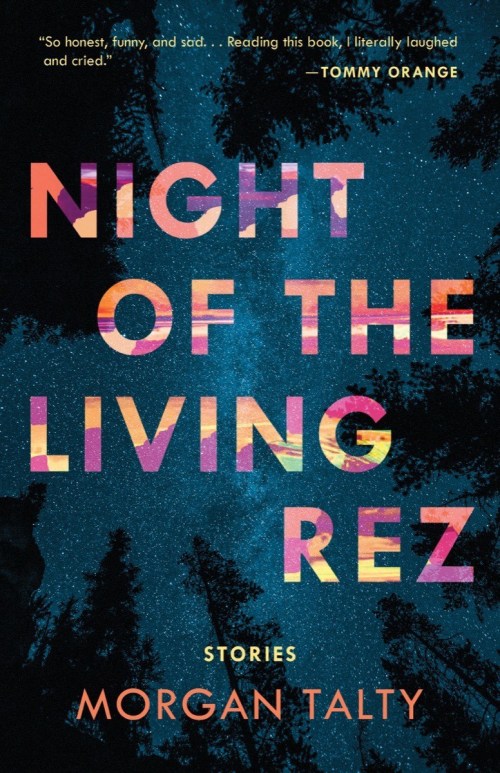
Night of the Living Rez
Morgan Talty
Tin House Books
In a series of twelve connected stories centering on David, a Penobscot boy living on the reservation in Maine, Morgan Talty examines how the seemingly mundane can connect to the larger line of our life and history. From stories about finding a jar of teeth, to finding your friend’s hair frozen to the ground when you go out to buy weed, to visiting your mother in a rehabilitation center, everyday stories on the reservation in Maine become moments that connect with the longer history of loss and disenfranchisement of Native communities across the continent. Night of the Living Rez, with an obvious reference to the famed Romero film, engages with a rotten past that won’t stay dead and a future that remains as unclear as the day to come. Humor, profound sadness, genuine fear, and the imagination of young kids diffuses the collection and winds their way into your very being as a reader.
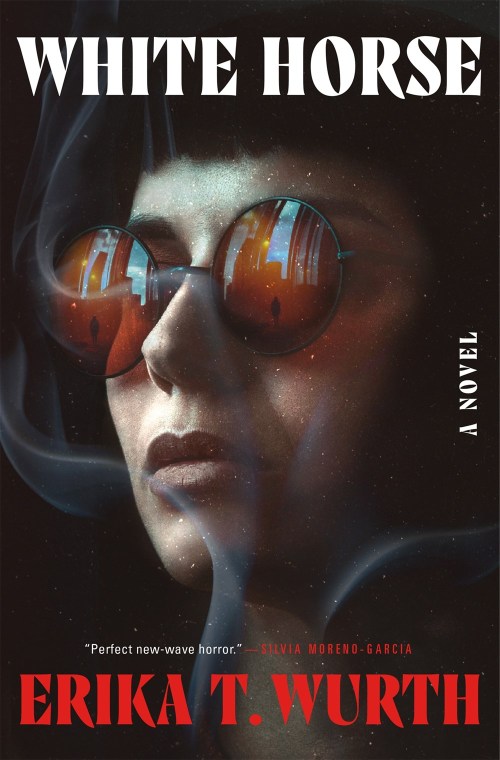
White Horse
by Erika T. Wurth
Flatiron Books
An ancient bracelet passed down through her family sets this story in frantic motion, as Kari begins searching for answers about her long-dead mother. But the bracelet carries more than just the ghosts of memories. Kari is now facing both the haunting spirit of her mother and another—much more monstrous—being. Wurth’s prose is realistic and unsettling, piercing and downright horrifying. She carries readers into the dive bars, bookstores, and roller rinks of Denver, dragging us through blood and mystery toward the past that Kari willfully ignored, and her family purposely hushed. Wurth makes one thing clear—the new wave of horror is certainly Native.
[ad_2]
Source link

